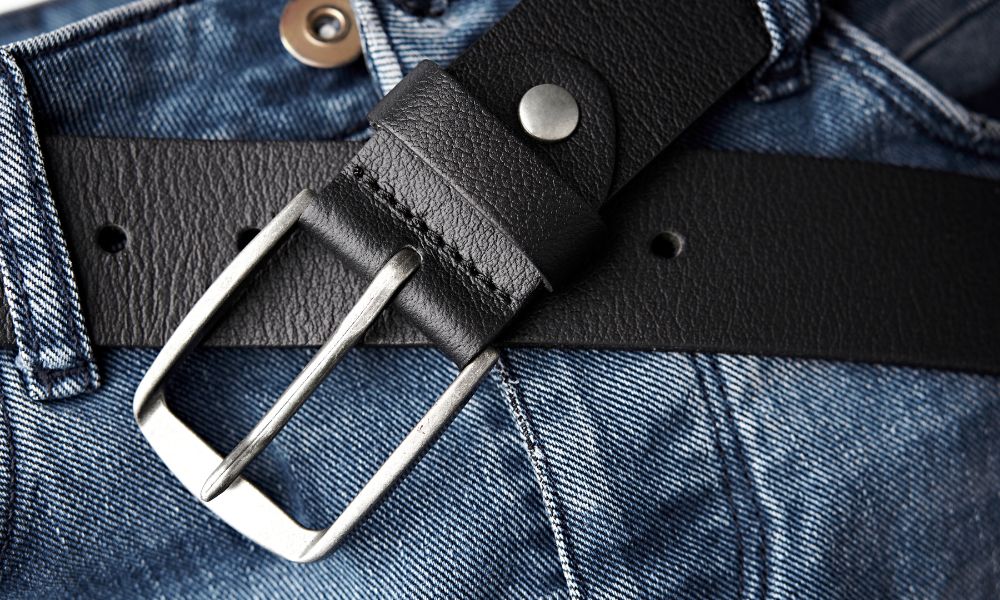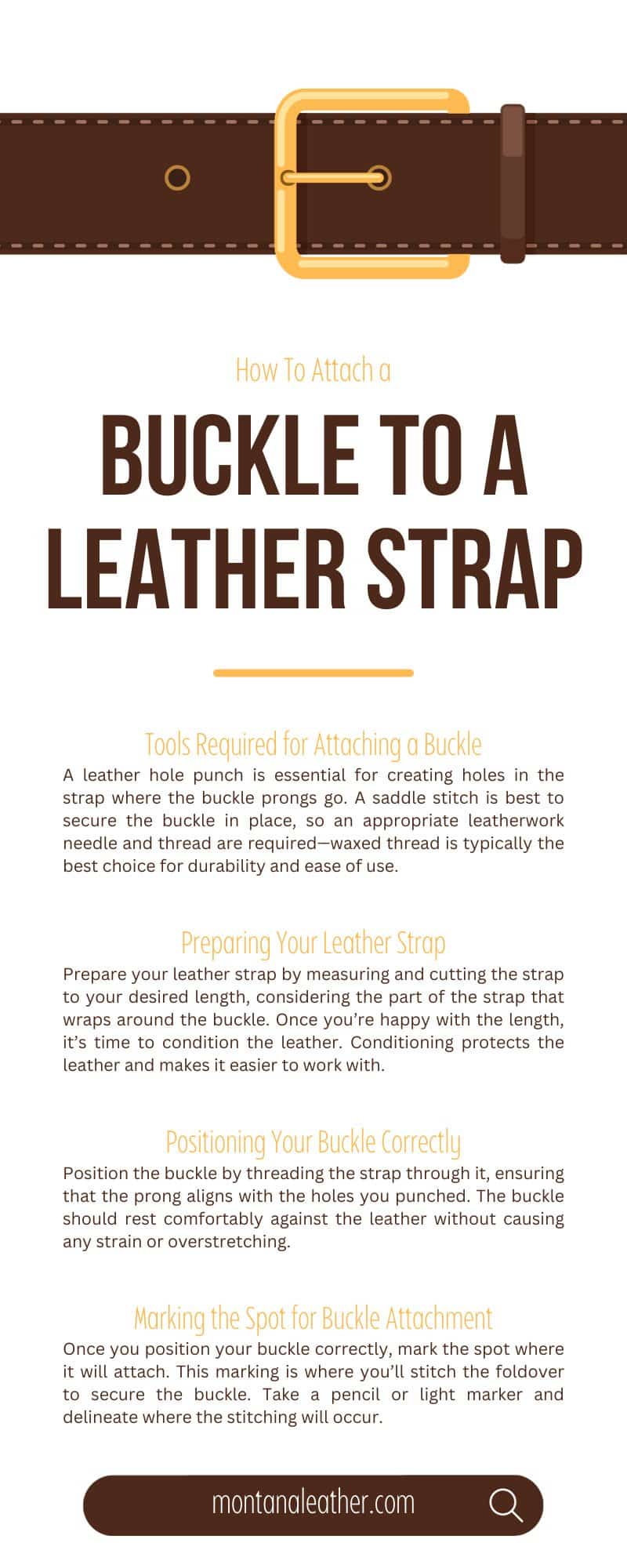
In the wide world of leathercraft, buckles and leather straps are fundamental. Whether you’re fashioning a belt, a strap for a bag, or a wristband, knowing how to attach a buckle to a leather strap is essential and requires keen attention to detail. Learn more about the process from this guide and step up your leather game for all your future projects.
Understanding Leather Straps and Buckles
Before embarking on your buckle-attaching journey, it’s essential to understand the components you’ll be working with—the leather strap and the buckle. Leather straps come in various widths, thicknesses, and finishes, each designed for different uses.
Choosing the right strap for your project depends on the function and aesthetic you aim for. Similarly, buckles range in size, shape, and style. Select classic brass buckles for that vintage belt feel or sleek stainless steel buckles for a modern twist on your bag strap; the options are vast and varied for unique designs.
Choosing the Right Leather Strap and Buckle
Selecting the appropriate leather strap and buckle for your project is crucial. Consider the purpose of your piece. For heavy-duty use, such as a belt or bag strap, opt for a thicker, more durable leather.
When selecting a buckle, ensure it aligns with your strap’s width and complements the overall design. The choice of materials will significantly affect the appearance and functionality of your finished product, and both choices need to work together to make a successful project.
Tools Required for Attaching a Buckle
In leatherwork, there are a variety of tools necessary for different jobs. You’ll need a few key tools to attach a buckle to a leather strap successfully.
A leather hole punch is essential for creating holes in the strap where the buckle prongs go. A saddle stitch is best to secure the buckle in place, so an appropriate leatherwork needle and thread are required—waxed thread is typically the best choice for durability and ease of use.
A mallet is also handy for driving the punch through the leather and tapping the stitches into place. For a professional finish, a leather edge beveler neatly rounds off the edges of the strap.
Preparing Your Leather Strap
Prepare your leather strap by measuring and cutting the strap to your desired length, considering the part of the strap that wraps around the buckle. Once you’re happy with the length, it’s time to condition the leather. Conditioning protects the leather and makes it easier to work with.
Apply a small amount of leather conditioner to a clean cloth and gently work it into the strap. Mark the location where the buckle will sit, and use your leather hole punch to create the necessary holes.
Positioning Your Buckle Correctly
Position the buckle by threading the strap through it, ensuring that the prong aligns with the holes you punched. The buckle should rest comfortably against the leather without causing any strain or overstretching.
Make sure the end of the strap extends beyond the buckle to create a foldover, which you’ll stitch to secure the buckle. Correct buckle placement will ensure a secure fit and a professional appearance for your finished piece.
Marking the Spot for Buckle Attachment
Once you position your buckle correctly, mark the spot where it will attach. This marking is where you’ll stitch the foldover to secure the buckle. Take a pencil or light marker and delineate where the stitching will occur.
Make sure you mark on both sides of the strap so the stitch is symmetrical. This crucial step ensures that your buckle remains firmly attached and in place.
Creating Holes for the Buckle Prong
You’ll need to use your leather hole punch once again to create holes for the buckle prong. Place your leather strap on a hard surface or a cutting mat to avoid damage to the table or work area. Align the hole punch over the marks you made where the buckle prong will go through the strap. Apply pressure and punch the holes.
It’s important to ensure the holes are large enough for the prong to fit through but not so large that the buckle shifts or moves around. The holes should be neat and clean, ensuring a perfect fit for the prong of your buckle.
Attaching the Buckle to the Leather Strap
For this step, start by folding the strap over the buckle and aligning the holes for the prong. Prepare your needle and thread for stitching. We recommend using a saddle stitch for a durable and neat finish.
Begin stitching at one end of your marked area, securing the foldover firmly to the rest of the strap. Continue stitching along the entire marked area, ensuring your stitches are tight and consistent for a professional finish.
Checking the Fit and Making Adjustments
Once your buckle is securely attached, it’s important to check the fit and make necessary adjustments. Test out your project just as you would in real life to evaluate its functionality. If the buckle seems too loose or too tight, you may need to add additional holes or adjust the positioning.
Sometimes, you may find that the buckle sits too high or too low on the strap, in which case you’ll need to make a new foldover and re-stitch the area. Remember, the goal is to create a piece that is aesthetically pleasing, practical, and comfortable to use.
Caring for Your Leather Strap and Buckle
After crafting and perfecting your leather strap and buckle, it’s important to know how to properly care for them to extend their life and keep them looking their best. Regular cleaning and conditioning of the leather strap prevents cracking and fading, keeping the leather soft and supple.
A gentle wipe with a damp cloth removes surface dirt, followed by a good-quality leather conditioner to nourish the material. Regular cleaning with a soft cloth maintains its shine and prevents the tarnishing of the buckle.
If your buckle is brass or silver, specific cleaning products may be necessary to restore its luster. Avoid using harsh cleaners on leather metal hardware to prevent corrosion. Remember to store your leather items in a cool, dry place away from direct sunlight to prevent discoloration and drying.
Exploring the Versatility of Leather Straps With Buckles
Leather straps with buckles are versatile and functional and boast a classic appeal. Use them as stylish wristbands, watch straps, or even as part of DIY leather sandals. In home décor, they make unique drawer pulls, rustic curtain tie-backs, or innovative hanging mechanisms for wall art.
The possibilities are truly endless. It’s all about letting your creativity flow and thinking outside the box. When you start to see beyond traditional uses, you’ll discover that the humble leather strap with a buckle is a powerful tool in your crafting arsenal.
Learning to attach buckles to leather straps is an essential skill in leather crafting. It requires patience, precision, and practice, but the satisfaction of creating a custom piece is well worth the effort.
Whether crafting a belt, a bag strap, or exploring the artistic possibilities of leather and buckles, remember to keep honing your skills. Above all, care for your crafted pieces properly to prolong their life and maintain their beauty.


